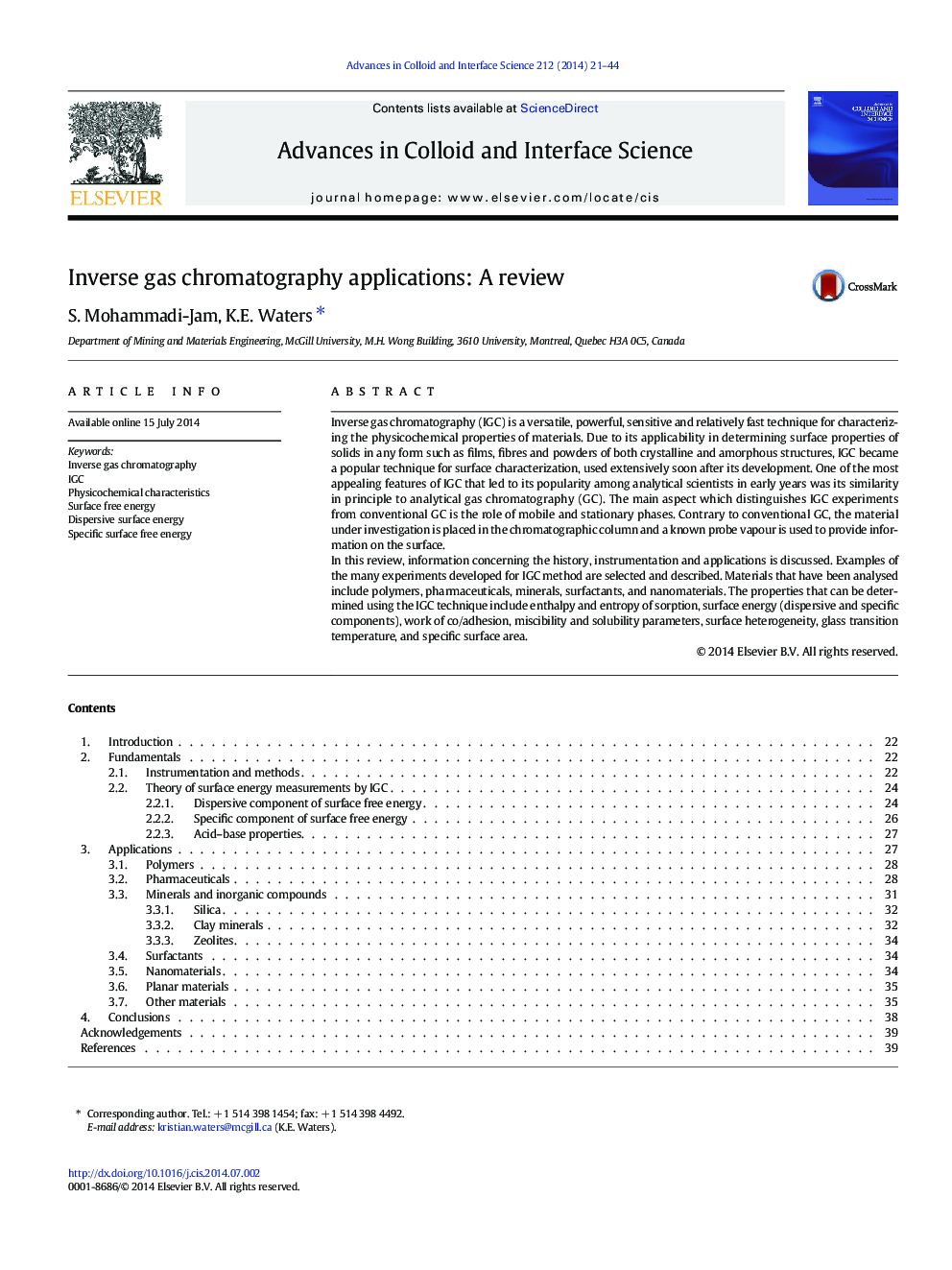| کد مقاله | کد نشریه | سال انتشار | مقاله انگلیسی | نسخه تمام متن |
|---|---|---|---|---|
| 590711 | 1453551 | 2014 | 24 صفحه PDF | دانلود رایگان |
• Inverse gas chromatography is a powerful tool in characterizing surfaces.
• Dispersive and specific components of surface energy can be measured.
• A wide variety of materials have been investigated over the years.
• Review of the technique and past research has been conducted.
Inverse gas chromatography (IGC) is a versatile, powerful, sensitive and relatively fast technique for characterizing the physicochemical properties of materials. Due to its applicability in determining surface properties of solids in any form such as films, fibres and powders of both crystalline and amorphous structures, IGC became a popular technique for surface characterization, used extensively soon after its development. One of the most appealing features of IGC that led to its popularity among analytical scientists in early years was its similarity in principle to analytical gas chromatography (GC). The main aspect which distinguishes IGC experiments from conventional GC is the role of mobile and stationary phases. Contrary to conventional GC, the material under investigation is placed in the chromatographic column and a known probe vapour is used to provide information on the surface.In this review, information concerning the history, instrumentation and applications is discussed. Examples of the many experiments developed for IGC method are selected and described. Materials that have been analysed include polymers, pharmaceuticals, minerals, surfactants, and nanomaterials. The properties that can be determined using the IGC technique include enthalpy and entropy of sorption, surface energy (dispersive and specific components), work of co/adhesion, miscibility and solubility parameters, surface heterogeneity, glass transition temperature, and specific surface area.
Figure optionsDownload as PowerPoint slide
Journal: Advances in Colloid and Interface Science - Volume 212, October 2014, Pages 21–44
